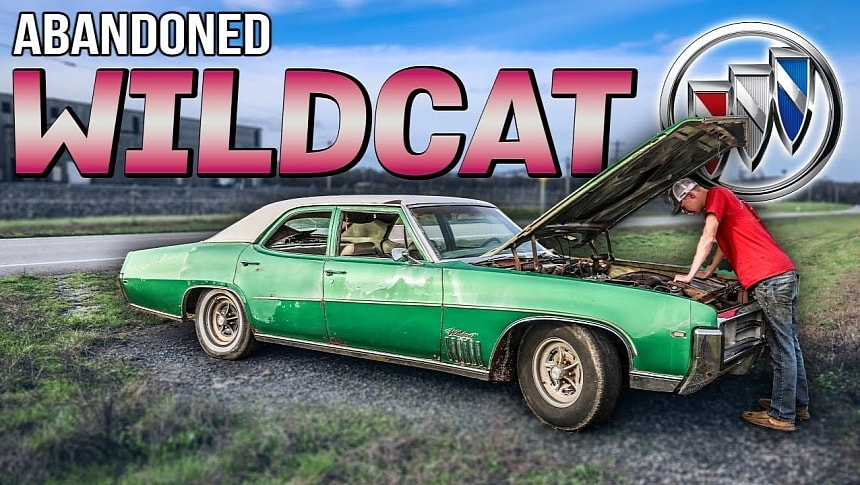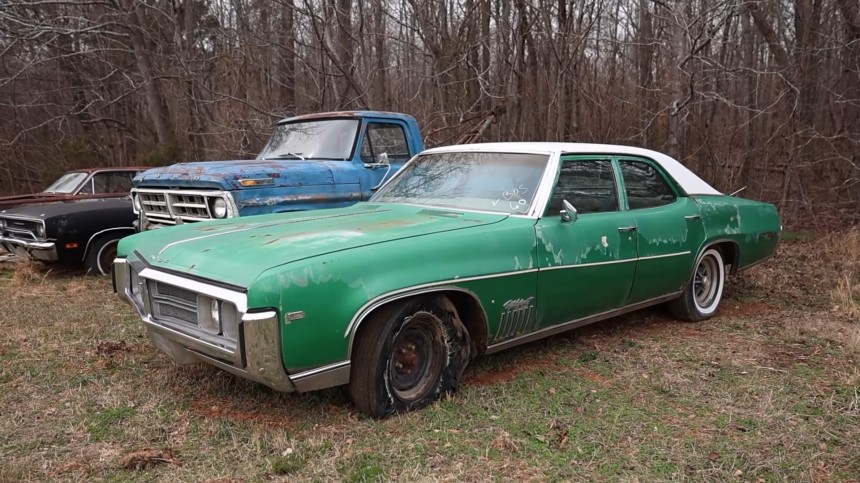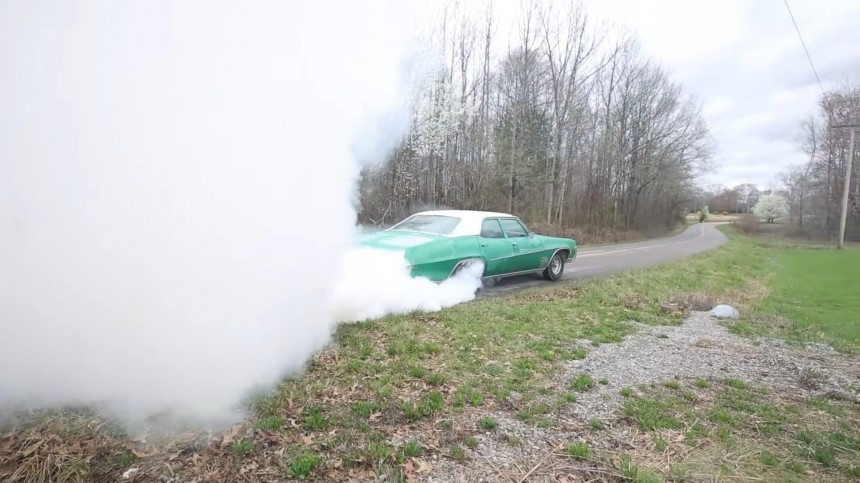The Wildcat was one of Buick’s most ill-fortunate nameplates despite also being the inceptor of the Tri-Shield performance program of the sixties. The model debuted in 1962 as a high-grade Invicta with a hard punch but got lost on the way to glory. By 1970, it was already a dying star in a galaxy of supernovas, and it went out quietly after just under half a million units were built.
The Wildcat name first appeared in Buick’s literature as a powerplant designation, then transferred to the car itself. For non-gearheads or fans of other brands, it could be a little confusing to read a brochure from that period. In the sales literature, the Wildcat automobile had a Wildcat engine, but so did other modes, such as the Riviera and the Electra.
As if that wasn’t enough, Buick also had the habit of identifying its engines by their torque ratings: the Wildcat 465 was not, in fact, a 465-cubic-inch V8, but it produced 465 lb-ft or torque. However, in the second half of the sixties, the Wildcat V8 was left out of the literature, and the division got back in line and started calling their engines after the total cylinder volume.
The Wildcat V8 came in various guises, ultimately stopping its growth spurt at 425 cubic inches (7.0 liters). In 1967, seeking to extort more torque for sportier tenure, Buick replaced the fabled Nailhead with a 430 cubic inch (7.0-liter) big block rated only marginally above the predecessor.
360 hp and 475 lb-ft (365 PS, 644 Nm) was a mean eight-cylinder in itself, with plenty of grunt and muscle to push Wildcats, Rivieras, and Electras effortlessly over long cruises on the highways. The big motor lasted for just three model years (‘67-‘69), and it was superseded in 1970 by the 455-cube (7.5-liter) enormity that out-torqued everyone else (short of Cadillac’s 500-cubic-incher).
The Wildcat spread over two generations, and it checked every body style in its eight years as a standalone model (‘63-‘70), averaging around 70,000 units every year between 1964 and 1965. Although not a sales workhorse, the nameplate kept consistent showroom traffic: 84,000 in 1964 and around 68,000 for the rest of the period, except 1968 (73,000).
Finding one in good condition is a reason for cracking open a beer. Still, there are situations – like in every nostalgia-clad car rescue – when a car is simply not worth the effort, energy, money, time, and work needed to return to a decent state. However, it doesn’t mean it’s a perfect candidate for the crusher: it has parts that can be retrieved and put to (better) use.
That’s the case with this 1969 Buick Wildcat four-door sedan, its 430-cubic-inch V8, and assorted turbo Hydramatic three-speed automatic. While the body isn’t a complete rust-plagued disaster, the YouTuber who bought it sight unseen isn’t interested in reviving the carcass. (And the three doors that won’t open aren’t the greatest incentives, either).
But the beating heart is good for another shot at piston majesty – in another car. Dylan McCool, the vlogger and car rescuer who revived this ailing Buick, doesn’t say his plans for the Buick powertrain. Granted, he did bring the car back from the dead and took it for a spin - that adventure cost him two rear tires and two days (see the details in the video below).
After a new carb and some other minor fiddling with it, the big block rumbles back to active duty - emphasis on 'active,' as the torque ogre doesn't shy away from laying a solid smokescreen on the tarmac. Sure, the rest of it might not be the prom queen of a car gathering, but this one is the 'all go, no show' black sheep that doesn't care about lipstick.
As if that wasn’t enough, Buick also had the habit of identifying its engines by their torque ratings: the Wildcat 465 was not, in fact, a 465-cubic-inch V8, but it produced 465 lb-ft or torque. However, in the second half of the sixties, the Wildcat V8 was left out of the literature, and the division got back in line and started calling their engines after the total cylinder volume.
The Wildcat V8 came in various guises, ultimately stopping its growth spurt at 425 cubic inches (7.0 liters). In 1967, seeking to extort more torque for sportier tenure, Buick replaced the fabled Nailhead with a 430 cubic inch (7.0-liter) big block rated only marginally above the predecessor.
The Wildcat spread over two generations, and it checked every body style in its eight years as a standalone model (‘63-‘70), averaging around 70,000 units every year between 1964 and 1965. Although not a sales workhorse, the nameplate kept consistent showroom traffic: 84,000 in 1964 and around 68,000 for the rest of the period, except 1968 (73,000).
Finding one in good condition is a reason for cracking open a beer. Still, there are situations – like in every nostalgia-clad car rescue – when a car is simply not worth the effort, energy, money, time, and work needed to return to a decent state. However, it doesn’t mean it’s a perfect candidate for the crusher: it has parts that can be retrieved and put to (better) use.
But the beating heart is good for another shot at piston majesty – in another car. Dylan McCool, the vlogger and car rescuer who revived this ailing Buick, doesn’t say his plans for the Buick powertrain. Granted, he did bring the car back from the dead and took it for a spin - that adventure cost him two rear tires and two days (see the details in the video below).
After a new carb and some other minor fiddling with it, the big block rumbles back to active duty - emphasis on 'active,' as the torque ogre doesn't shy away from laying a solid smokescreen on the tarmac. Sure, the rest of it might not be the prom queen of a car gathering, but this one is the 'all go, no show' black sheep that doesn't care about lipstick.















































